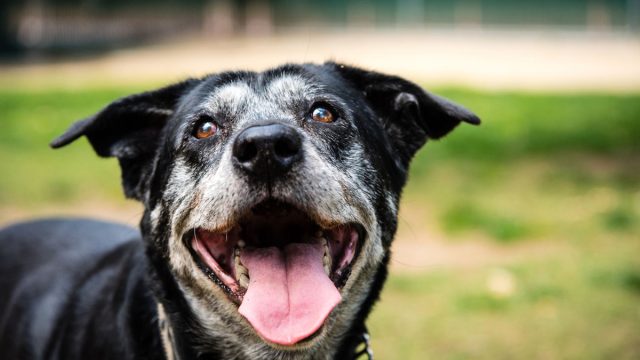You’ve Been Calculating Your Dog’s Age Wrong, New Study Says

Dog ownership is more than just a daily joy for millions around the world: studies have shown that there are numerous health benefits to keeping a canine companion around, including potentially adding years to your life. But for as much as dogs may be just like us, the rate at which we age is one difference in the dynamic of the relationship that can be difficult to cope with—and at the very least, pretty hard to do accurately. Now, a new study has shed some light on how we figure out how old our four-legged friends are, finding that there’s a good chance you’ve been calculating your dog’s age wrong. That’s because, as the research proved, dogs age rapidly when they are young, but gradually slow down after hitting the age of seven, when the rate of aging begins to plateau. Read on to find out how to do the math for your fur baby’s age, and for more on which pups have the most fans, check out The 50 Most Popular Dog Breeds in America.
Many are familiar with the age-old age-adage that “dog years” are simply seven times one human year. But researchers from the University of California San Diego School of Medicine have discovered the actual rate your dog ages, publishing their findings recently in the journal Cell Systems. According to the research, which tracked Labrador retrievers’ DNA, in order to calculate dog years, you must multiply the natural logarithm of your dog’s age in human years by 16 and then add 31. So, let’s say your dog is 5 in human years, which is loge(5). That equals 1.609. (You can use this handy calculator to find the natural log of your dog’s age.) Therefore, 1.609 times 16 is about 26, then add 31, and you can deduce that your 5-year-old pup is 57 years old in human years.
While the logarithmic formula is unfortunately not one you can do with mental math like the “times seven” trick, according to lead author Trey Ideker, it makes sense. “After all, a nine-month-old dog can have puppies, so we already knew that the 1:7 ratio wasn’t an accurate measure of age,” Ideker said in a statement. “I have a 6-year-old dog—she still runs with me, but I’m now realizing that she’s not as ‘young’ as I thought she was.”
Using the formula, the expected lifespan of Labrador retrievers, 12 years, then translates to about 71 in human years, which is just about the worldwide average life expectancy for humans.
“Dogs experience the same biological hallmarks of aging as humans, but do so in a compressed period, around 10 to 15 years on average, versus over 70 years in humans,” Elaine Ostrander, PhD, National Institutes of Health (NIH) Distinguished Investigator and co-author of the study, said in a statement.
RELATED: For more up-to-date information, sign up for our daily newsletter.
To conduct their research, the University of California San Diego team took blood samples from 104 dogs, mostly Labrador retrievers, ranging from 4 weeks old to 16 years old. The team focused on “the changing patterns of methyl groups,” CNN reports. Scientists are able to use these “methylation states” that change over time in mammals to come up with mathematical models, known as “epigenetic clocks,” that can account for a more accurate depiction of age as time passes. The researchers compared the Labs’ methylation patterns to previously recorded methylation patterns from 320 humans, ranging from 1 year old to 103 years old.
The researchers plan to build on their newfound information by expanding their work to a larger sample pool of pups, since their findings were specific to Labs. “It will be particularly interesting to study long-lived breeds, a disproportionate number of which are small in size, versus breeds with a shorter lifespan, which includes many larger breeds,” Ostrander said. And to see how dogs only get better with age, here are 30 Photos That Show Why Senior Dogs Are the Best.
Read the original article on Best Life.